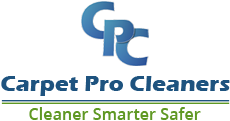PURIFIED WATER AND HOT WATER EXTRACTION
A variety of contaminants and impurities may be present in water supplies. Laboratory grade water is water has had impurities such as microorganisms, particulates, dissolved ionized or non-ionized solids and gases as well as endotoxins, pyrogens, DNase and RNase to make it suitable for use in the laboratory. Pure water is a necessity in all laboratories, though different applications call for different degrees of purification. Broadly speaking, there are three different grades of laboratory water (four using the standards for laboratory water as defined by the American Society for Testing and Materials). These grades of lab water being designated as types one through four.
Type 1 water is ultrapurified water which has a nearly nonexistent level of particulate matter, bacteria and other microorganisms, organic carbon, endotoxins, pyrogens and other contaminants. Type 1 laboratory grade water is typically produced by deionization, distillation or osmosis before undergoing further purification. This grade is also referred to as analytical grade water and is used for applications including in vitro fertilization, HPLC, ion chromatography and tissue culture.
Type 2 water contains very low amounts of colloids, organic and inorganic impurities; low enough to make this grade usable in trace analysis, atomic absorption spectrometry and other analytical applications whose sensitivity demands a high degree of water purity. Type 2 water can be produced by purifying potable water (such as tap water) using reverse osmosis in conjunction with distillation, ion exchange or multiple distillation.
Type 3 water is used for preparing reagents in solutions, preparing chemical buffers and a range of wet chemistry work and is the standard water used for analytical purposes in laboratories. This general grade of laboratory water is also used in microbiological studies and preparing nutrient media for cell culture. Type 3 water may be produced through commercially available water purification equipment which uses several different purification methods or by double distillation.
Laboratory grade water may be produced by a number of methods: Filtration technologies including reverse osmosis, nanofiltration, ultrafiltration, microfiltration and particle filtration may all be used to remove particulates and other contaminants to produce water which is pure enough for laboratory use. Filtration is often the first step in producing type 1 and 2 water.
WET VS. DRY CLEANING
Advantages and Disadvantages of Each Dry cleaning is considered a “surface clean.” In other words, it doesn’t clean as deeply as a wet clean does. The advantage of this method is that it’s faster. With a wet cleaning, you may need to wait anywhere from 8 to 12 hours for the solution to dry. And so that is also the potential downside – it does take a little longer. The advantage, as mentioned, is that it’s more forceful and more thorough, and so the wait is often worth it.
Typical Cleaning Process Most professional cleaners would use something similar to the following process outlined below. First they survey the area to be cleaned to understand the layout of the area and the type of dirt and stains they will be dealing with.
Next they vacuum the area to remove as much “easy” dirt as possible.
After vacuuming, they pre-condition the carpet with a specialized cleaning solution. This emulsifies the suspended dirt and biomaterials.
Next they agitate the areas that receive the most amount of foot traffic. This serves to loosen the compacted dirt.
After agitation, they rinse the cleaning solutions applied in Step 3. This leaves the carpet fibers residue free. If there are stubborn stain spots, they then treat these areas with specialized stain removers. If necessary, these areas are left to “dwell” for a time so that the spot removers can really do their work. When the proper amount of time has passed, the removal solutions are rinsed from the carpet.

